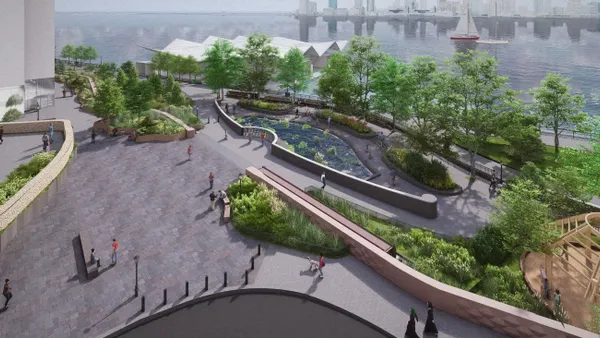UPDATE: The House has approved a $790 billion spending package that includes $1.57 billion for the U.S.–Mexico border wall, The New York Times reported. The bill now heads to the Senate, where it is likely to face resistance, as Democrats have said they won't support using taxpayer dollars to fund the wall's construction.
Dive Brief:
-
The U.S. House Appropriations Committee has proposed a $1.6 billion allowance for the construction of a border wall along the U.S. and Mexico border as a part of a 2018 Department of Homeland Security funding bill, according to The Hill.
-
DHS officials said the money would allow them to start wall construction, beyond the repairs and prototyping process currently underway. President Donald Trump has previously stated that he expects Mexico to pay for the wall.
-
Democrats have said they will oppose any U.S. spending on the wall, something that could lead to a stalemate as the fiscal year comes to a close at the end of September, according to Bloomberg.
Dive Insight:
Even if the DHS gets the $1.6 billion for wall construction, the agency's own studies have put the wall's cost at approximately $22 billion with a three-and-a-half-year timeline.
The border wall was a major part of Trump's presidential campaign. However, one of the ways he rallied such enthusiasm for the plan was to insist that Mexico would pay for the wall's construction. Mexican officials have repeatedly said they will not pay for the construction of a border wall.
In June, DHS announced that it would begin construction on four to eight wall prototypes this summer in existing wall sections near San Diego to help the agency determine which ones are most effective under real-world conditions. The area is considered to be the most rigorous testing ground because the wall there has been breached roughly 800 times in one year.
The names of the contractors who are building the prototypes have not been released, most likely because of the negative reaction the project has garnered so far. Officials in cities like New York and San Francisco have said they are considering measures that would prevent their cities from doing business with companies that so much as bid on the wall.
The project has also been light on specifics. When U.S. Customs and Border Patrol (USCBP) put the wall out to bid, they released very little specifics regarding what it was looking for in its design and construction. The only requirements were that the wall should be roughly between 18 feet and 30 feet high, aesthetically pleasing from the U.S. side, as well as scale-resistant and tamper-proof.
Bidders were encouraged to come up with their own wall designs using concrete or other materials. The USCBP has estimated the cost of each wall prototype at between $200,000 and $500,000 each — adding more costs to a project whose funding has yet to be decided and is heavily disputed.













